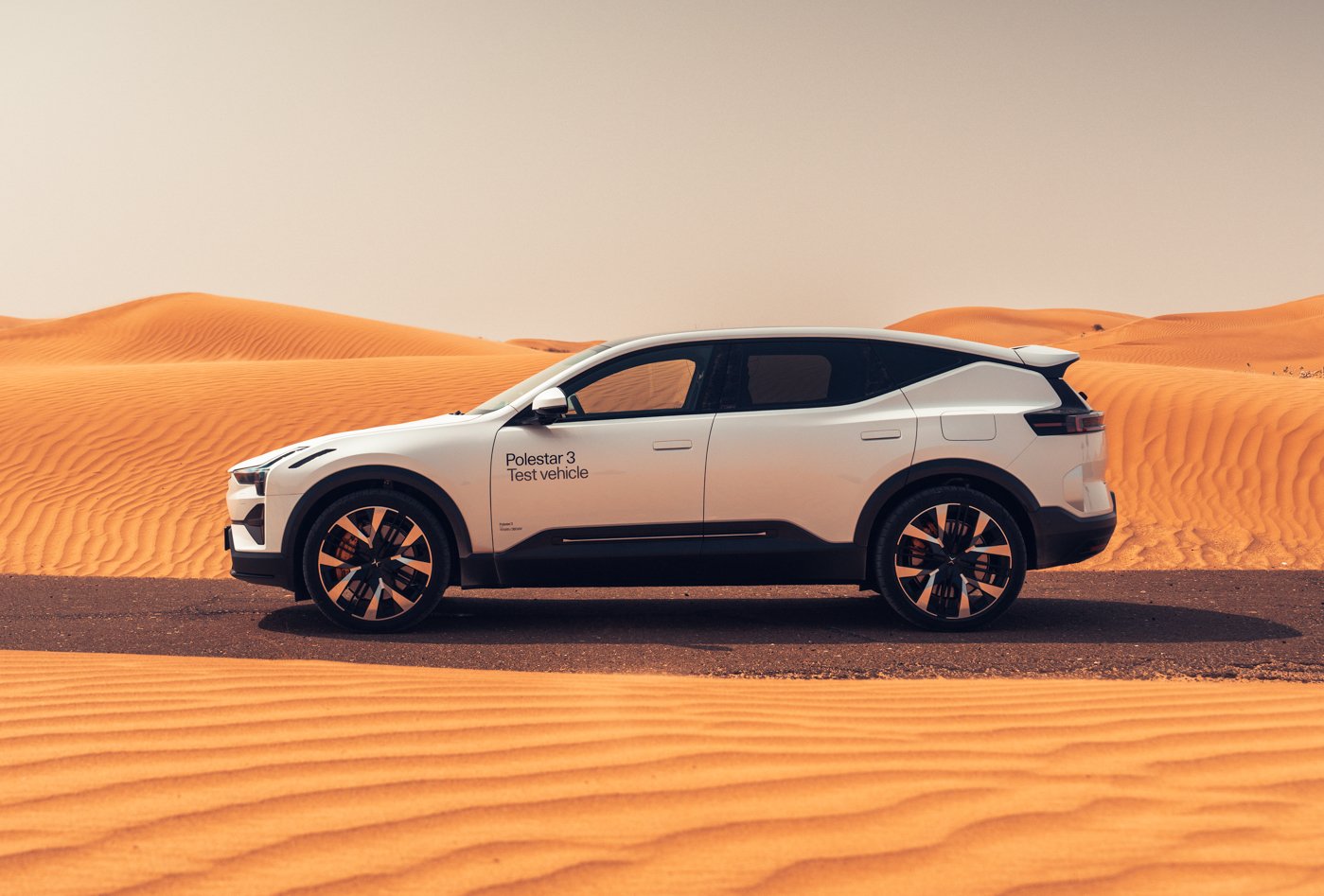Polestar 3 launch timing delay signalled
/Though the NZ distributor has a car on show, the latest factory admission suggests it might not have this crossover on sale until months after the cited release date.
SIGN off on hot weather testing having brought Polestar’s next model closer to public availability is tempered by the factory signalling local availability in January is a lost cause.
The Polestar 3 crossover, which in addition to being an obvious style statement is also a seriously tech car - being the first electric to offer an optional Lidar driver assistance sensor array - seems more likely to be a mid-2024 car at best, going by the latest announcement.
Deep within latest publicity from the Geely-owned Sino-Swede is concession international production won’t even start until the first quarter of 2024.
That would conceivably mean availability up to 18 months after the model choice, local prices and specifications were shared.
Comment about this is being sought from Polestar NZ, which today invited media to scrutinise a pre-production example in its showroom in Auckland.
Polestar has proliferated outlets around the world with those display cars as it strives to keep up interest in its space.
In its release today, the make said “selected ‘Polestar Spaces’ across 27 markets now feature Polestar 3 prototype display cars which are available for customers to explore. These will be followed by test drive cars in 2024.”
Adding to this, Thomas Ingenlath, Polestar’s chief executive is quoted as saying: “The Polestar 3 development and testing programme is progressing well, and I expect production to start in Q1 2024. Polestar 3 is at the start of its journey and customers can now visit our retail locations around the world to see its great proportions and sit in its exclusive and innovative interior.”
The electric mid-size sports utility is an important next step, and not just because quasi off-road body styles are popular here.
Registrations data - and reports of a stockpile of unallocated cars in Auckland - suggests the early strong sales pace achieved by the ‘2’ sedan that kicked off the brand’s excursion into this market has started to dwindle.
The sedan has also just undergone a big update that includes transition from front to rear-wheel-drive, a result of the electric motor being relocated from under the bonnet into a space more or less under the rear seats. The same has occurred for the Volvo C30 and XC30 that build upon the same platform.
The process involved in ensuring Polestar 3 is ready for customers is very advanced. The two weeks of extreme weather testing in the United Arab Emirates - one of the hottest places on Earth - is indicated as being among sign-off processes.
The Polestar 3 prototypes were driven in the urban metropolises of Abu Dhabi and Dubai and in the deserts surrounding them in temperatures up to 50 degrees Celsius.
The company says this was one of several extreme weather tests that Polestar cars undergo during development.
NZ is set to see the car in ‘long range dual motor’ for $154,900 and ‘long range dual motor with performance pack’ for $169,900.
With performance pack, the standard tune of 360kW and 840Nm of torque coming with the standard car increases to 380kW and 910Nm. Both drivetrains are tailored to provision a rear-drive feel.
Adjustable one-pedal drive is included, as well as an electric Torque Vectoring Dual Clutch function on the rear axle – an evolution of what was first developed for Polestar 1. A decoupling function is also available for the rear electric motor, allowing the car to run only on the front electric motor to save energy under certain circumstances.
The models have an extensive standard equipment, with air suspension, a full-length panoramic glass roof, LED lighting inside and out, retractable door handles with proximity sensing, and 21-inch alloy wheels factoring for both.
A Plus Pack and Pilot Pack are fitted as standard for the first model year and include a raft of premium, luxury, and convenience features like a 25-speaker audio system from Bowers and Wilkins with 3D surround sound and Dolby Atmos capability, soft-closing doors, head-up display and Pilot Assist.
Advanced chassis control is provided by dual-chamber air suspension as standard, allowing Polestar 3 to adapt between comfort and dynamic suspension characteristics, and the car can adjust its active damper velocity electronically once every two milliseconds (500 Hz).
Polestar has voiced optimism that the 111 kWh battery pack will deliver a range of up to 610km, this gauged from what it describes as an preliminary WLTP assessment.
The lithium-ion battery features a prismatic cell design housed in a protective aluminium case with boron steel reinforcement and liquid cooling. A heat pump is included as standard, helping Polestar 3 utilise ambient heat for climate- and battery preconditioning.
Polestar 3 is also equipped for bidirectional charging, enabling future potential for vehicle-to-grid and plug-and-charge capabilities.



















